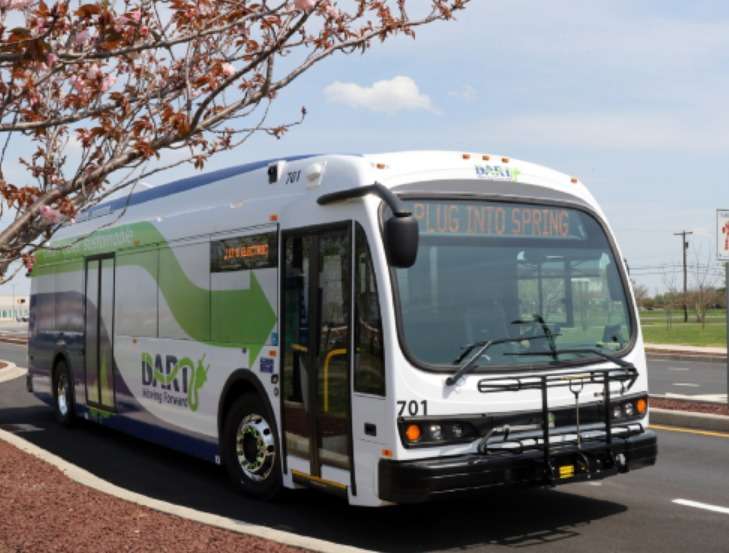AASHTO Issues 40th Annual Public Transportation Report

The COVID-19 pandemic inflicted an unprecedented crisis upon the public transportation industry – and a new report by the American Association of State Highway and Transportation Officials provides a snapshot of the transit issues caused by the pandemic.
[Above photo by Delaware Transit Co.]
The 265-page report is the 40th annual overview of the public transportation sector published by AASHTO. Based on fiscal year 2020 data, AASHTO constructs this report from survey responses received from 51 departments of transportation, including the District of Columbia. No data was included from any U.S. territories, the organization noted.

At AASHTO’s 2022 Spring Meeting in New Orleans, Roger Millar – secretary of the Washington State Department of Transportation and AASHTO’s 2021-2022 vice president – noted that this year’s public transportation report showed the total federal public transit formula funding increased by 236.5 percent or nearly $25 billion for FY 2020 due to COVID-19 pandemic aid.
He also pointed out that 25 state DOTs increased public transit funding by just under $1.4 billion in FY 2020 compared to FY 2019.
The report also noted that overall transit ridership in the United States dropped sharply in April 2020 to nearly 80 percent below 2019 levels largely due to national stay-at-home orders – and remained at more than 60 percent below 2019 levels for remainder of the year even after state and local governments lifted stay-at-home orders. As a result, transit agencies throughout the nation suffered financial losses of $26 billion in 2020.
Because of the financial crisis resulting from the pandemic, Congress passed the Coronavirus Aid, Relief, and Economic Security or CARES Act in March 2020, which included:
- $22.7 billion for urbanized area public transit providers;
- $2 billion for rural public transit providers;
- $30 million for Tribal Transit programs; and
- $75 million for administration and oversight.
The report noted that CARES Act funding proved essential to help public transit systems mitigate “catastrophic” financial losses caused by COVID-19 – losses that would have led to either ceasing operations or dramatically cutting service.
The CARES Act also provided for the quick dispersal of funding and allowed those funds to support operating expenses, including administrative leave for transit personnel impacted by reduced operations due to the pandemic, as well as pandemic-related expenses.

However, WSDOT’s Millar noted that, for FY 2020, state DOTs collectively provided $10.4 billion more for public transit funding than federal formula funds.
“Over the past five years, state funding has surpassed federal formula funding by more than $29.9 billion,” he noted in comments at the organization’s spring meeting.
Millar added that AASHTO’s annual public transportation report showed that state DOTs continue delivering everything from commuter and fixed-route services to paratransit, on-demand, and other specialized transit services for all types of communities – urban, small urban, and rural.
AASHTO’s research also found that COVID-19 also created an opportunity for state DOTs and their public transit providers to develop and deploy “creative and innovative” solutions to address a variety of pandemic-driven needs.
That included everything from enhancing cleaning services for transit equipment to becoming an impromptu delivery system for food, medicine, personal protective equipment, and other goods to those in need.


